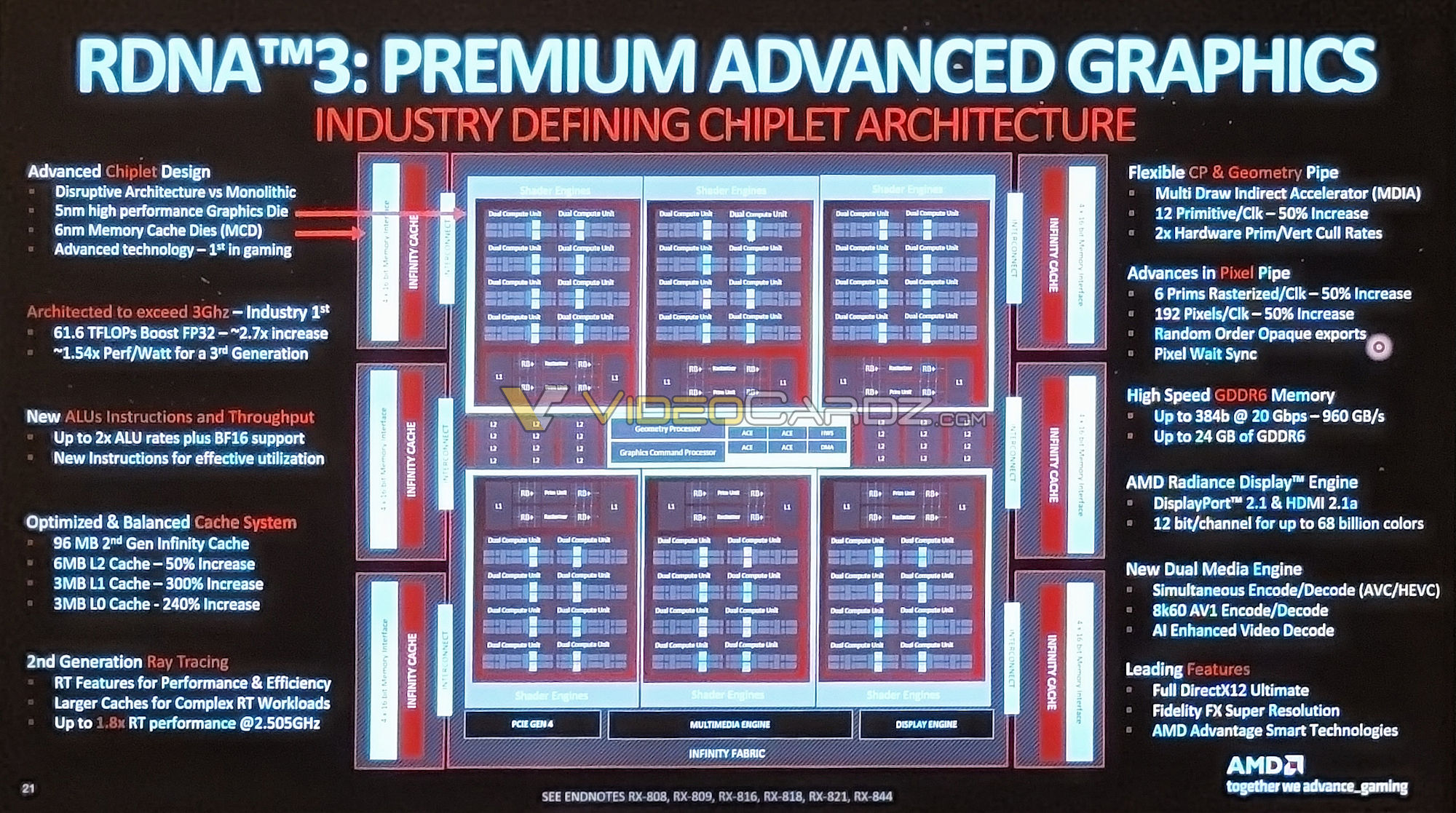Radeon RX 7900 XTX: Block diagram shows Navi 31 with its special features


A block diagram of Navi 31, which is used on the Radeon RX 7900 XT and Radeon 7900 XTX, has appeared online. This illustrates the special features of the new RDNA 3 graphics cards and reveals exciting details.
The colleagues from Videocardz became leaked an alleged Navi 31 block diagram that illustrates the special features of the new RDNA 3 graphics chips. Some of these have already been presented together with the Radeon RX 7900 XTX and 7900 XT, with the block diagram now illustrating them particularly well. It also reveals, assuming authenticity, previously unknown details of the new Radeon GPUs.
It is not new that AMD relies on a chiplet design with multiple dies for Navi 31. There is a GDC, the Graphics Compute Die, and six so-called Memory Cache Dies (MCDs). These each contain two 32-bit memory controllers and the L3 or Infinity Cache with a total capacity of 96 MiByte. While the GDC comes from TSMC’s 5nm process, behind the MCDs is TSMC’s 6nm process.
Radeon RX 7900 XTX: Navi 31 apparently with significantly more cache
AMD had not yet communicated how the other cache levels are doing. According to the description in the diagram, the capacity for the L0 is 3 MiByte, which corresponds to a plus of 240 percent compared to Navi 21, for L1 at 3 MiByte (plus 300 percent) and for L2 at 6 MiByte (50 percent). As a reminder: The Infinity Cache measures 96 MiByte, but it was 128 MiByte in Navi 21.
The diagram also shows Navi 31’s six shader engines, each with eight dual-compute units, and various other well-known features. The description also states that the architecture is designed to exceed 3 GHz. Interestingly, the current reference design of the Radeon RX 7900 XTX only has a game clock of 2.3 GHz. However, Navi 3x introduces another clock domain for the front end, which works faster (2,500 MHz for the XTX).
The statements about the clock naturally give hope for plenty of overclocking leeway, which the board partners may already be making good use of with their custom designs. 3 GHz has recently been a topic in the rumor mill. Against this background, significantly higher clocked manufacturer cards of the Radeon RX 7900 XT(X) are perhaps not so far-fetched. AMD may also save this potential for a Radeon RX 7950 XT(X) or special water-cooled models. As is so often the case, that remains to be seen.
Source: Videocardz
Reference-www.pcgameshardware.de